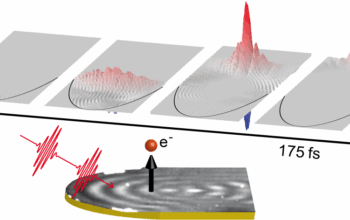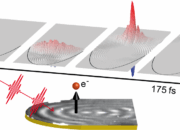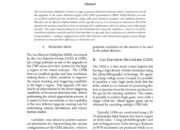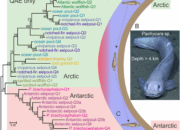Silicon, the second most abundant element on Earth, has long been heralded as the cornerstone of modern electronics and photovoltaic cells. Since its discovery in the early 19th century and subsequent adoption by the semiconductor industry, crystalline silicon has primarily maintained a position as a stalwart material characterized by remarkable electro-physical properties. However, an imminent paradigmatic shift is poised to reposition crystalline silicon as a versatile contender in next-generation technologies, ranging from advanced computing systems to sustainable energy solutions. This article explores the attributes, evolving applications, and the burgeoning impact of crystalline silicon in a rapidly advancing technological landscape.
At its core, crystalline silicon is recognized for its ordered atomic lattice structure, where silicon atoms bond covalently in a tetrahedral configuration. This arrangement not only imparts mechanical strength but also enables impressive semiconductor properties, particularly in its high electron mobility and band gap characteristics. The material’s intrinsic ability to conduct electricity when doped with impurities facilitates a variety of electronic functionalities—allowing silicon to serve as the bedrock for integrated circuits, transistors, and diodes in consumer electronics.
Yet, the traditional utilization of crystalline silicon is being reexamined as the demand for more sophisticated, energy-efficient systems rises. The explosive growth of artificial intelligence (AI), the Internet of Things (IoT), and the burgeoning field of quantum computing converge to necessitate materials that not only outperform existing paradigms but also accommodate novel methodologies of data processing and storage. Crystalline silicon stands at a critical juncture where its adaptability could redefine these emerging sectors.
In the realm of AI, the processing capabilities of silicon-based devices are being augmented through innovative architectural designs such as neuromorphic computing. Neuromorphic systems emulate the neurobiological architectures present in the human brain and rely on the robust properties of crystalline silicon to carry out complex computations efficiently. By harnessing the inherent flexibility of silicon, researchers are pioneering designs that integrate resistive switching and synaptic plasticity—crucial attributes for mimicking biological learning processes. These advancements promise not only faster computations but also a substantial decrease in energy consumption, thereby addressing the pressing environmental challenges associated with large-scale AI applications.
Moreover, as the IoT proliferates, the integration of silicon into various devices demands more than just conventional microprocessors. The advent of silicon photonics—a burgeoning field that utilizes light transmission through silicon wafers—exemplifies how crystalline silicon can transcend its traditional boundaries. Photonic systems enable faster data transfer rates and significantly reduce latency, thereby enhancing connectivity in IoT ecosystems. Silicon’s capacity to facilitate both electronic and optical functions positions it as an indispensable player in the development of next-generation communication networks.
Transitioning to the domain of renewable energy, crystalline silicon’s prominence in photovoltaic technology indicates its potential for perpetuating sustainability. Solar cells utilizing crystalline silicon have dominated the market due to their excellent efficiency rates and cost-effectiveness. Continuous research aimed at enhancing the photocurrent generation and reducing reflection losses is paving the way for next-generation solar technologies. Innovations such as bifacial solar cells—wherein sunlight is absorbed from both sides—embrace the inherent geometric and material advantages of crystalline silicon, allowing for higher efficiency rates and greater energy yield.
Furthermore, the exploration of tandem solar cell configurations—incorporating perovskite layers atop crystalline silicon cells—has garnered significant attention. This hybridization capitalizes on the complementary bandgap properties of each material, enabling a profound enhancement of overall energy conversion efficiencies. Such configurations are not only promising in elevating the performance standards of solar technology but also highlight the adaptability and potential of crystalline silicon in synergistic applications with emerging compounds.
Despite these advancements, challenges persist. The environmental toll associated with silicon extraction and purification, notably in the form of carbon emissions and ecological disruption, necessitates a conscientious approach towards sustainability. Efforts to develop circular economy principles—encapsulating recycling methods and alternative sourcing strategies—are critical to circumvent the environmental implications tied to crystalline silicon production. Innovative depolymerization processes, which facilitate the recovery of silicon from used products, exemplify developments striving for sustainability within the crystalline silicon lifecycle.
Moreover, as the world grapples with an array of technological hurdles, the versatility of crystalline silicon offers ancillary pathways toward future breakthroughs. The potential incorporation of 2D materials with silicon—blending monolayers of graphene or transition metal dichalcogenides—may lead to composite materials that enhance functionality beyond the capacity of crystalline silicon alone. Such hybrid approaches could facilitate the realization of ultra-thin, flexible devices, epitomizing the future of portable technology.
The exploration of crystalline silicon thus unveils an expanse of possibilities with profound implications across numerous technological domains. As advancements in material science propel the evolution of silicon-based systems, a transformation awaits that could revolutionize how we approach electronics, energy, and intelligent computational systems. Crystalline silicon, retained in its venerable status while being molded into innovative architectures, exemplifies the promise of evolution within material realms—a testament to the symbiosis between nature’s inherent gifts and human ingenuity. The potential embedded within crystalline silicon not only piques intellectual curiosity but fosters a vision of technology where sustainability, efficiency, and versatility coalesce to solve the complex challenges of tomorrow.










